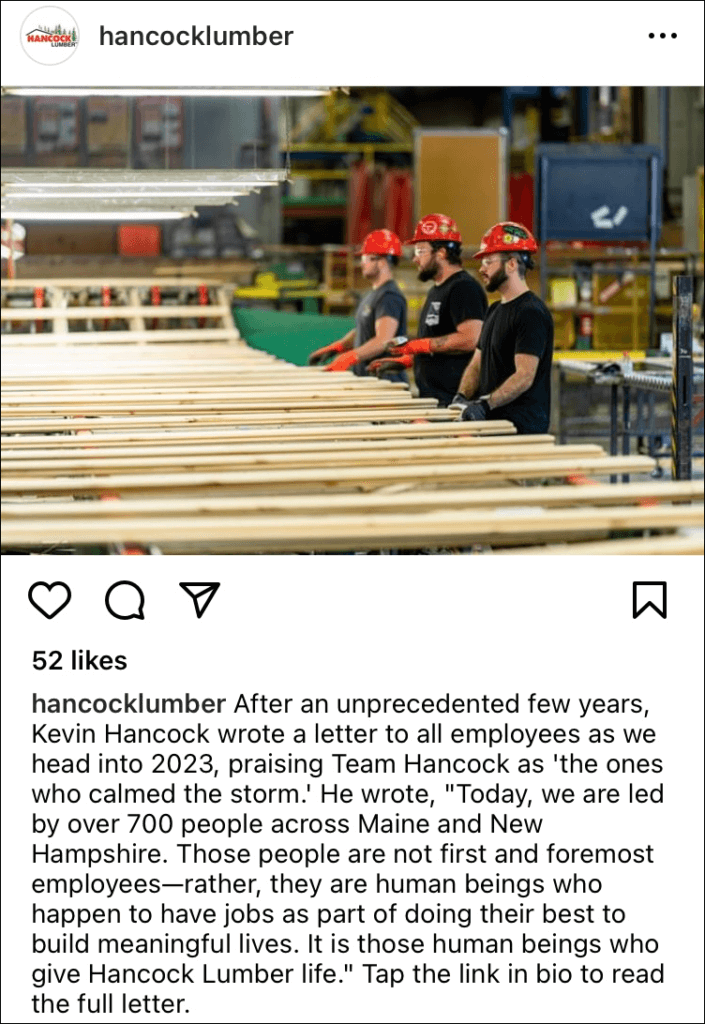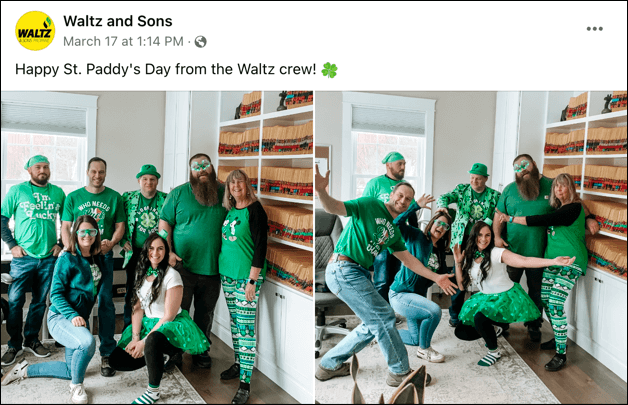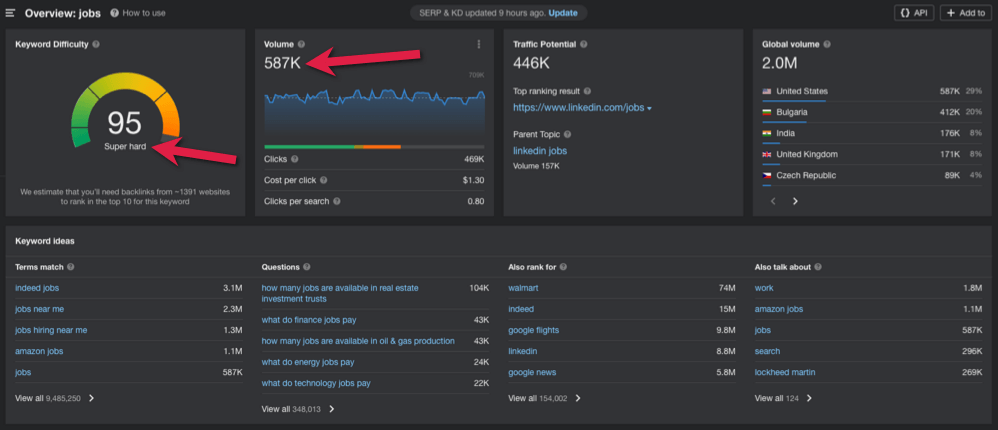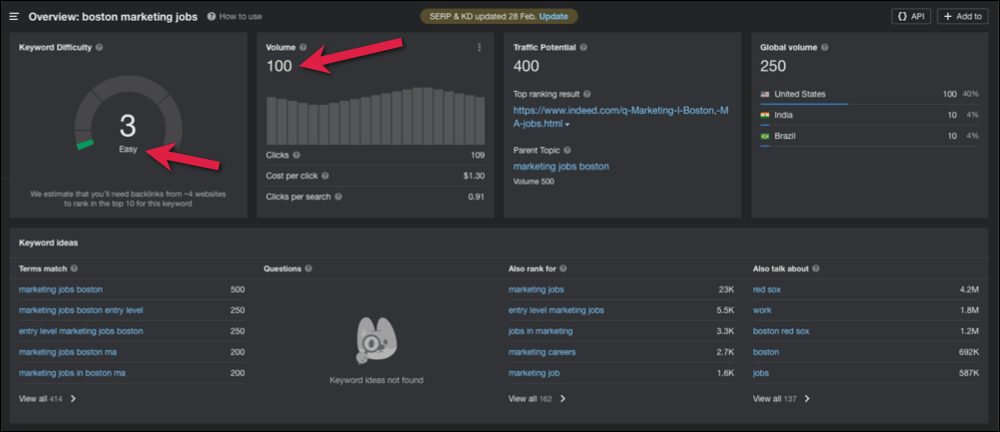Are you struggling to fill key positions at your company? Are the recruitment tactics that worked in the past falling flat now? Are you starting to lose business because you don’t have the personnel to fulfill the requirements and deliverables? If so, you’re not alone.
Over the past few months, I’ve noticed that a growing percentage of the companies that reach out to me for digital marketing help aren’t necessarily looking for more business, they’re looking for more qualified employees.

Now, we’re not recruitment or HR professionals at flyte; we’re digital marketers, designers, and developers. Digital marketing can’t replace the skills or expertise of professional recruiters or hiring directors. But, if you can’t fill key positions at your company, you can’t grow, and we’re all about sustainable growth.
Below are some of the tactics that we’ve seen work in helping attract new job seekers and positioning yourself as an employer of choice. None of these recommendations are meant to take the place of job boards, job fairs, recruiters, or any of the tried and true methods you’ve used in the past. Those are still critical, but here’s how you can get more irons in the fire and amplify the outreach you’re already doing.
Make Your Recruiting Efforts Evident on Your Website
Although many people may apply for a job through your Indeed or ZipRecruiter posting, many more will visit your website to get a better picture of your company and the position. It’s your website’s job to build trust, sell the benefits of working for you, and guide them along their journey.
Make It Obvious That You’re Hiring
If recruitment–especially ongoing recruitment–is important to your company, then it should be something you promote as soon as people arrive at your website. Two key places would be “above the fold” on your homepage and as a primary navigation item.
Here’s a great example of promoting it in the hero image on your homepage, which is often the most visited page on your website.

Of course, not everyone lands on your homepage, so adding it as a primary navigation item allows people to see you’re actively recruiting from whichever page they may visit first.

Build a Dedicated Recruitment Page (or more)
A well-designed recruitment section of your website can make a big impact on attracting top talent and streamlining your hiring process. Depending on your company size and how many jobs you tend to have open at a given time, this may be a single page or an entire subsection of your website.
Some things that should be included here are:
- Company Overview – Position yourself as an employer-of-choice. Share your mission, vision, and values…briefly. Remember, this page is about your potential hires, not about you.
- Company Culture – Include stories, photos, and videos that show your work environment, volunteer opportunities, community engagement, employee recognition, etc. Paint the picture of what it’s like to work for you.
- Employee Testimonials – Sharing success stories of current (or past) employees is a great form of social proof. You may want to include examples of different types of positions or seniority. Make the testimonials stronger by including photos of these employees on the job, or even consider video testimonials.
- Application Process – Explain clearly what the application process is, how long it takes, and what steps are involved.
- Job Openings – That’s why they’re here, right? Depending on the size of your company and the number of available positions you may want to organize them by department, location, seniority, or even include a search feature. A 3rd party ATS may be helpful here.
- Job Descriptions – The job title and possibly a one sentence description is all you need, especially if there are a lot of jobs on this page. Instead, link off to a webpage, PDF, or 3rd party site with a more detailed description of requirements, salary range, and benefits, DEI statement, etc. To further streamline the process, include the application form at the bottom of each page.

Communicate the Recruiting Process Clearly
Once they complete the application process, make sure they land on a page that explains what happens next: when you’ll review the application, when they can expect to hear back, and so on.
You can also follow up with an automated drip campaign to confirm that their application is in process.
Turn Your Social Media Accounts Into Recruitment Tools

Let me be up front: I don’t expect that your organic (unpaid) social media posts–especially on Facebook–will appear in your ideal candidates’ feeds. Most people who see your social media posts are actively following you. Even if your followers do see your post, only a small percentage of them would be qualified job candidates anyway.
The fact is, few people start their job search on social media. Does that mean you should ignore your social media accounts when it comes to recruitment? Absolutely not!
Often, when people learn about a new job they want to find out about the company culture and what it’s like working there. They want to know the values of the company, whether their employees are happy, and whether there’s opportunity for advancement.
While some will visit the company website (see above), others will go to the social media accounts to find a more authentic, unpolished view of the company. They want to see photos that show off the company culture, and perhaps read comments and reviews that don’t get edited by the marketing and communication team.
Including a lot of the elements of the recruitment section on your website in your social feeds is helpful, but social is also a place to celebrate your employees with posts about:
- Work anniversaries
- Birthdays
- Promotions
- Satisfied customers
- Community involvement and volunteerism
- And so on.

People want to work in companies that look fun, where they will be respected, where they have opportunities for professional growth and advancement, and where their work matters. Make sure you’re showing that side of your business in your social feeds, along with your job openings.
How to Use Facebook Ads and Paid Social for Recruitment
Paid social, or social ads, serve a very different role in your recruitment strategy. Unlike organic posts that are primarily seen by your followers, your ads can show up in the feeds of your targeted audience, helping you reach people who haven’t heard of your business, may not be actively looking for a new career, but are still good candidates.
Unless you have an unlimited budget, I would probably focus ads on the job openings and the benefits of working for you, rather than the “feel good” posts about your employees. In other words, your ads should be transactional in nature: let people know you have an open position and have the ad drive people to the page on your website where they can apply.
The only caveat here is that while targeting on social ad platforms is powerful, many of the most powerful targeting tools aren’t available to you when it comes to promoting a new job opening due to anti-discrimination laws in the US and around the world. You can’t target people based on their age or gender, but you can target them based on geography, so there is still some ability to put your ad in front of your ideal candidates.
Using LinkedIn to Find Your Ideal Candidates
As the world’s most popular business-centric social media platform, LinkedIn is a great place to reach and attract candidates. They even have a service called LinkedIn Recruiter.
Here are a few ways you can use LinkedIn for recruitment:
- Post jobs to the feed – Once the job listing is on your website, you can create an organic post as your Company or as yourself. The more connected you are, the more people will see it.
- Advertise your job – LinkedIn ads can help you target people based on location, job title, current or past company, and experience. Since most people keep their employment information up-to-date on LinkedIn, this is some powerful targeting. Just be forewarned that LinkedIn tends to have higher cost per result than other social platforms.
- Prospect for candidates – LinkedIn’s search is powerful, and a favorite tool of recruiters. In the same way you can target people in ads, you can target them in prospecting, and then reach out to them individually through LinkedIn messenger to alert them to a job. Depending on their settings, this message may also be delivered to their email inbox outside of LinkedIn. Prospecting in this fashion isn’t the most scalable approach and is probably best used for higher level positions where quality far outstrips quantity when it comes to candidates.

Can SEO Help Your Recruitment Initiatives?
When I first planned on writing this article, I wasn’t even sure I wanted to include SEO. After all, if someone is searching for a job, aren’t they more likely to turn to Indeed, ZipRecruiter, or a local online job board, as opposed to Google.

With a monthly search volume of 587K for “jobs,” I guess I was way, way wrong! However, as you can see from this Ahrefs screen grab, getting to the first page of Google for a term as general “jobs” is “super hard.” Also, I’d be concerned about the quality of leads coming from this keyword.
So, what happens if we narrow our criteria?

Getting to page one for “boston marketing jobs” turns out to be much easier. However, the flip side of this is that only about 100 people a month are searching for this term. Still, for your open Boston-based marketing position, reaching 100 people who are actively searching for a position like this could be huge.
To take advantage of this, make sure your careers section and your individual job posts are optimized for appropriate terms, including your location, industry, job title, and so on.
Many people take down job listing pages after they’re done (which makes sense.) However, Google doesn’t like when pages disappear and reappear, as they don’t want to send someone to a fickle page like that. Depending on the size of your company and recruitment needs, consider keeping up pages all the time with these keywords, and add some copy that while you’re not currently hiring, you’re always looking for excellent candidates.
Next Steps in Leveraging Digital Marketing for Employee Recruitment
With all of these action items–and others that perhaps I didn’t include–where should you start?
I’d recommend starting with your website. No matter how much qualified traffic you send to you can get, if your website isn’t optimized to build trust, answer questions, and streamline the application process, all your other efforts are in vain.
Once your career pages are ready, I’d start running ads on social media. Ads take effect immediately and reach a wider audience than you can do on your own.
From there, I’d move on to LinkedIn, posting the jobs to the newsfeed and potentially running ads there and prospecting for candidates.
Once that’s complete, I’d move to optimizing your job listings and career section for SEO. It’s possible you did this while you were improving your website already, but if not, now’s the time. SEO isn’t an “overnight sensation.” It takes time to build up trust with Google. While you may feel that this is an argument for starting sooner with your SEO initiatives, the work you do on SEO is unlikely to help you with the job listing you posted this morning. Instead, you should spend the next few months continually improving the SEO of the pages on your website around recruitment…which will help you in six to twelve months.
Concurrent with any SEO initiatives, I’d start building out an editorial calendar for organic social media that celebrates your employees and shows off your company culture. This is also a long-term, ongoing campaign to position yourself as an employer-of-choice.
Need Some Outside Expertise?
If you need help improving (or building) your career section, running social ads, or improving your SEO, we’re here to help! We can be those extra hands (and brains!) until you staff up. Just reach out today for a free strategy session.

Rich Brooks is founder and president of flyte new media, a digital agency in Portland, Maine, that’s been in business for 25 years. He is a nationally recognized speaker on entrepreneurship, digital marketing, and social media.
He founded The Agents of Change, an annual conference and weekly podcast that focuses on search, social & mobile marketing. He recently co-founded Fast Forward Maine, a podcast and workshop series for growing Maine businesses.
Rich is the author of The Lead Machine: The Small Business Guide to Digital Marketing, a popular and well-received book that helps entrepreneurs and marketers reach more of their ideal customers online.
